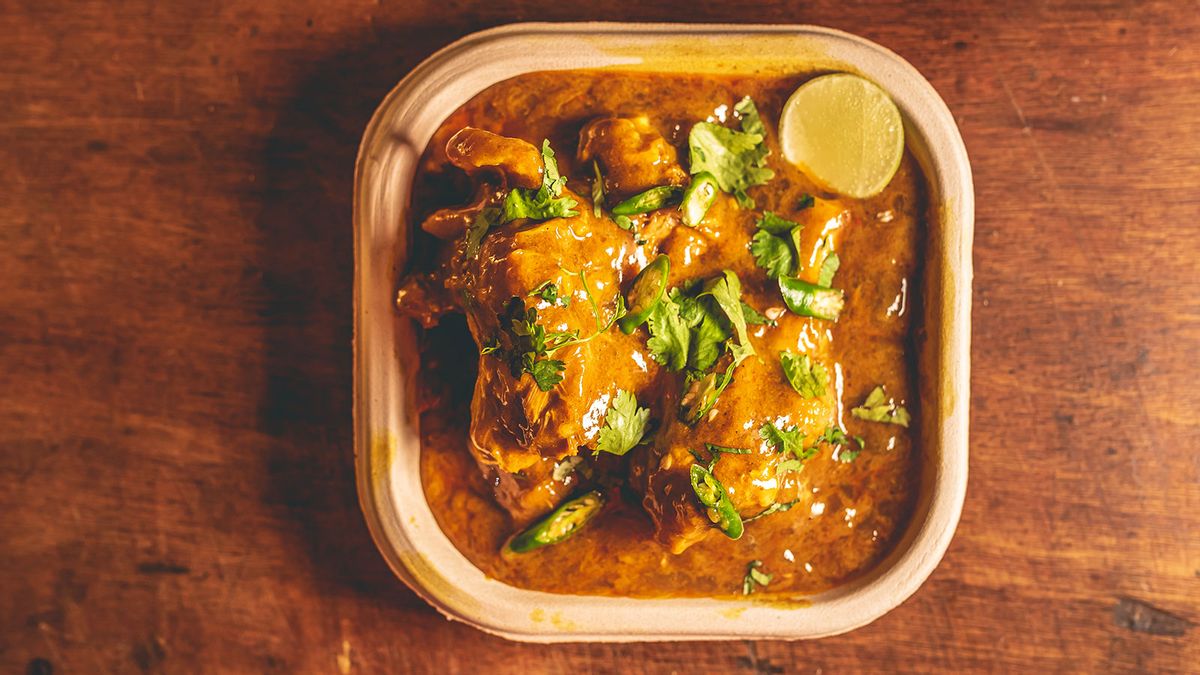Vijaya Saini is decked in clothes assigned to newly married women in the north of India. Brocade dupatta, glass and gold bangles, diaphanous kurta finery that she tugs and tucks so the delicious soupy gravy she’s about to dip into doesn’t leave oily smudges. It’s 8.45 am and in this sparsely furnished dining room at Karim’s in Old Delhi all the tables have been taken. Though there are 43 items on the menu at Karim’s, everyone in the room is waiting for the singular dish that will be served for breakfast - at 9 each morning - ‘Nau baje ki Nihari’.
“I belong to Old Delhi, this is my Peehar so I’ve been here several times but for my husband, it’s a completely new experience,” says Saini, pointing at the far end of the room to a solitary young man. She and I are the only women waiting for this piping hot, aromatic mutton curry that will be served with Khamiri rotis. Nihari is cooked overnight, making the meat so tender, it falls off the bones. The word originates from the Arabic word ‘Nahar’ which means day. This is a dish that you eat at daybreak, and was served to the royalty after morning prayers.
The dining room is now brimming with locals, tourists, cyclists, curious travellers and foodies who know that the Nihari at Karim’s is more than just a dish. It is a slice of history imbued with the flavours of a hundred-year-old recipe. Each morning, it is the only item that is served, along with paya, a soup made of lamb/goat trotters.
Kamaluddin Ahmed is the fourth-generation owner of this iconic restaurant. It began as a tiny dhaba in 1913 in a bylane across Jama Masjid. Ahmed begins filling up the half and quarter plates of Nihari from massive deghchis in which they’ve been simmering overnight. The servers garnish the piping hot bowls he passes on with crisp brown fried onions, ginger juliennes and chopped green chillies, before stacking them on a metal tray. You can polish the bowl off with rotis that are being baked right there.
If slow-cooking is the magic sauce for the Nihari, the soft and mildly sour Khamiri rotis are the best way to lap up this fragrant curry suffused with flavours of tender meat. In old Delhi, the dough for the rotis is impregnated with Khamir, the Urdu word for yeast. The Khamiri roti is a popular flatbread believed to be a staple during the Mughal era.
As the day progresses, other items will roll out of the Karim’s kitchen. Mutton Korma and Chicken Mughlai will compete for attention. But if you want to experience a slice of the old city’s culinary history, be there by nine for the Nihari!



